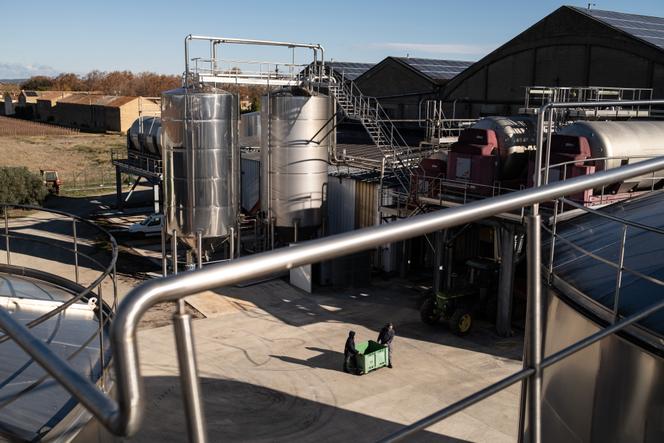 Inside the La Vigneronne cooperative winery, in Canet-d’Aude, southwest France, November 21, 2025. ULRICH LEBEUF/MYOP FOR LE MONDE
Inside the La Vigneronne cooperative winery, in Canet-d’Aude, southwest France, November 21, 2025. ULRICH LEBEUF/MYOP FOR LE MONDE
The first frosts have settled over the vineyards of Corbières and Minervois in southern France, and winemakers are bracing for another harsh winter. In Canet-d’Aude, a small hillside village inland from Narbonne in the southwest, pruning of the Merlot, Chardonnay and Cabernet vines is about to begin. The 200 members of the La Vigneronne cooperative winery, spread across 1,450 hectares and seven villages, are trying to withstand a crisis that has been looming for years. Episodes of frost, drought, a general decline in consumption, rising energy costs – the causes are many, and they are adding up.
“We harvested 92,000 hectoliters this year, which is 25% less than the previous year,” said Nans Pascual, director of this “co-op” founded in 1933. “Yes, the profession is struggling. Here, we try to rely on solidarity so that we don’t disappear,” he added. Between 2010 and 2020, the number of farms across the region fell by 16% – or 1,200 farms – according to figures from the Regional Directorate for Food, Agriculture and Forestry. 70% of those closures involved winegrowers. In 2025, over 5,000 hectares have already been uprooted. “Despite the increase in wine quality at the beginning of the 2000s, we still can’t make ends meet,” said Damien Onorré, the new president of the Aude Winegrowers’ Union, himself a winegrower in the nearby village of Paraza. On November 15, around 6,000 people protested in Narbonne to defend the profession, which has been hit hard by the crisis.
You have 66.04% of this article left to read. The rest is for subscribers only.


Dining and Cooking